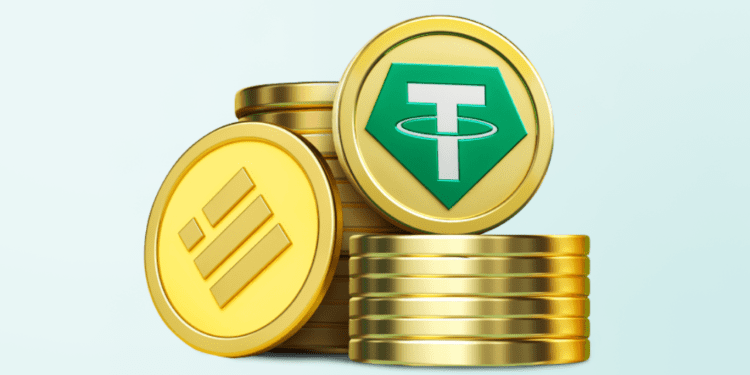- The SEC’s crackdown on Binance USD has caused a significant drop in its market cap, benefitting Tether’s USDT whose market capitalization has risen to multimonth highs.
- USD Coin (USDC) has also experienced sharp movements in reaction to the SEC announcement, with its supply increasing and decreasing following news about the regulatory action.
- Tether dominance has jumped over 51% as of Feb 15 due to inflows of nearly $890 million since February 12, likely due to investors seeking safety in USTD amidst the regulatory crackdown on BUSD.
The United States Securities and Exchange Commission (SEC) has put its foot down: Paxos, a stablecoin issuer, must stop issuing Binance USD (BUSD), the third-largest stablecoin. This action is a significant boon for Tether’s USDT token.
Since February 13, when the SEC decided to go after Paxos, the BUSD market cap plunged from $16 billion to $14 billion as of February 16.
Meanwhile, USD Coin (USDC) stablecoin saw capital drainage when investors found out about the news on Paxos. USDC supply decreased from its previous high of $41.29 billion to $40.99 billion as of February 14. In the short term, it made a slight rebound when Circle, the USDC issuer, said it did not receive a lawsuit from the SEC.
However, overall data suggests that USDC’s market cap has been continuously declining by -25% since June 2022. During that time, it peaked at $56 billion. The recent volatility showed how vulnerable USDC is compared to USDT, given the regulatory risk associated with USDC-backed tokens issued in an unregulated manner through entities like Paxos and Circle Financial Service LLC.
Anti-Crypto Investigators Want to Prove Tether is Not Dollar-Supported
It is not just market capitalization that witnesses evidence of Tether’s resurgence due to BUSD’s fall from grace with regulators; investigators continue their efforts to present hard evidence that Tether is not covered 100% by the US dollar or if other cryptocurrencies only keep its stability. Tether has repeatedly denied such accusations claiming regularly assuring trusted accounting companies every quarter, which state that consolidated assets are at least equal to or more than consolidated liabilities by at least $660 million, according to their December 31 report.
All these facts point towards one thing: given how unstable USDC currently stands due to fears surrounding regulatory observation, investors appear increasingly determined to turn towards a safer asset such as Tether USDT, whose reserves now exceed $69 million thanks mainly due to Paxos’ legal woes – making this distinctly different from what it was before regarding investor sentiment and confidence in both coins whose future direction remains unknown at this point especially considering the current state of regulatory uncertainty facing digital assets today.
Stablecoins have become a heated topic since the fall of UST, Terra’s US dollar stablecoin. Do Kwon, the creator of UST, wanted to show everyone that an algorithm can keep the currency stable. Unfortunately, it was depegged in April and May 2022, losing its $1 equivalence, forcing LUNA, the token in the Terra ecosystem, to crash from $120 to $0. Meanwhile, USDD, the stablecoin by Tron founder Justin Sun, was also depegged in December 2022.














